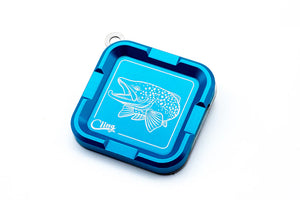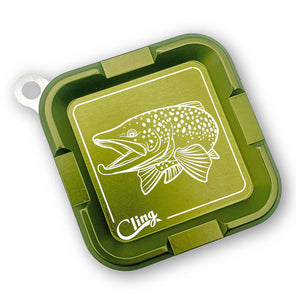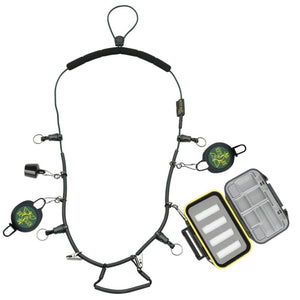Mist hangs over the river at dawn, and you can hear the splash of a chinook breaching upstream — a reminder that in Canada, salmon don’t wait for anyone.
From the thunder of chinook charging Ontario rivers in September to the delicate takes of Atlantic salmon in Newfoundland, the season never really slows. On the West Coast, wild Pacific salmon give anglers a smorgasbord of challenges and thrills; every run, every species, has its own fight.
If you’re looking for salmon fishing near you, or planning a trip to explore Canada’s waters, you’ll need the right knowledge and gear.
Keep reading to learn about the salmon species that roam Canada, their habits, and all the hotspots to find them.
Following the Salmon Across Canada
Few places in the world offer such a variety of salmon. From chinook and coho in Ontario’s Great Lakes to the full spread of Pacific salmon in British Columbia and Atlantic salmon in the Maritimes. Each species has its own quirks:
- Chinook (King Salmon): The heavyweights of Canadian rivers, prized for size and stamina.
- Coho (Silver Salmon): Known for acrobatic fights and aggressive strikes.
- Sockeye (Red Salmon): Famous for massive numbers during peak runs, but they’re picky eaters.
- Pink Salmon (Humpies): The most abundant, running strong every odd year in the Pacific.
- Chum Salmon (Dog Salmon): Late-season runners, often overlooked but still rewarding.
- Atlantic Salmon: Native to Eastern Canada, celebrated for their selectivity and challenge.
No matter which species you chase, Canada’s rivers, lakes, and coastal waters deliver some of the most exciting salmon fishing you’ll find anywhere.
Ontario’s Salmon Run: Late August to Early October
When cool nights return in late August, Ontario’s salmon season kicks into gear. Chinook salmon lead the charge, pushing out of the Great Lakes into tributaries like the Credit River, Ganaraska, and Humber. They grow big here, with many fish topping 20 pounds, and their raw power will test any angler’s gear. Hotspots worth your time in Ontario include:
Credit River (Port Credit)
One of the best spots to catch staging chinook before they move upstream.

Ganaraska River (Port Hope)
A productive run of chinook and coho, with fish stacking up near the mouth in September.

Niagara River
Known for strong chinook runs, plus late coho moving in deeper into fall.

Owen Sound and Georgian Bay Tributaries
These waters draw chinook and coho salmon from Lake Huron.

In Ontario, trolling deep in the Great Lakes with lures like Triple Threat Magnum Spoons, available in over 30 different colours, can work well before the fish move into rivers. Once they’re in moving water, drift setups with beads such as Creek Candy 10mm Glass Beads or baits like Atlas Big Boy Salmon Eggs can be your ticket to landing a big one.
Atlantic Salmon in Eastern Canada
The sun rises over a quiet river in the Maritimes, and you can feel the pull of something ancient beneath the surface. Atlantic salmon are making their way home, returning from the ocean to rivers in Newfoundland, Labrador, Nova Scotia, and New Brunswick.
Unlike their Pacific cousins, many Atlantics survive spawning, coming back year after year, making every strike a rare and treasured fight.
Top East Coast rivers include:
Miramichi River (New Brunswick)
World-famous for Atlantic salmon. Summer and early fall runs pack the river with fish, flowing past the town of Miramichi and giving anglers easy access to one of Atlantic Canada’s best salmon fisheries.

Exploits River (Newfoundland)
Known for consistent action, winding through Grand Falls–Windsor. Locals and visiting anglers gather here during peak runs, chasing every jump and flash.

Margaree River (Nova Scotia)
Historic and crystal-clear, near Margaree Forks on Cape Breton Island. This river is as much a cultural landmark as it is a salmon fishery.

Restigouche River (New Brunswick/Quebec border)
Legendary for massive Atlantic salmon. Some of the largest in North America run here, testing even the toughest rods and reels.

Bonavista River (Newfoundland)
Smaller fish, but feisty fighters. Perfect for anglers who enjoy a hands-on, intimate experience with the water and the run.

Pro tip: Fishing for Atlantic salmon is a different game. They can be selective, often ignoring traditional lures. Many anglers rely on flies, but drifting worms, such as the Euro Tackle Mummy Worm or small beads that mimic natural egg patterns in the fall, can also tempt them.
Patience is key. Hooking one feels like a gift after hours of working a run, and each strike has a way of reminding you why salmon are called the “king of sport fish.”
Western Canada’s Wild Pacific Salmon
Out west, salmon variety is something to write home about. Each species has its own timing and character, giving anglers a chance to chase something different every trip.
Chinook Salmon
British Columbia’s rivers, like the Fraser between Hope and Agassiz, the Skeena between Terrace and Hazelton, and Kitimat between Kitimat and Kitamaat Village, are legendary for Chinook. These waters hold deep pools and current seams where the big Kings stage. Some push 50 pounds or more, and they’ll test every ounce of your tackle. Prime spots for trolling large spoons or plugs sit in tidal and freshwater sections.
In-river, float fishing with roe or drifting beads works too. You’ll want a strong rod, like the Streamside Heritage Salmon Rod, to handle the power these fish throw at you.
Coho Salmon
Coho typically arrive after Chinook. Aggressive and acrobatic, they leap spectacularly when hooked. Coastal trolling near northern Vancouver Island still sees good action during their run.
Top spots include the Vedder River between Chilliwack and the Vedder Canal, the Stamp River from Port Alberni to the Stamp Lake confluence, and the Campbell River along the lower section near the city of Campbell River.
Sockeye Salmon
Sockeye are plentiful in the Fraser River system, particularly from Harrison Hot Springs to Chilliwack, and in tributaries like the Adams, Stave, and Seton rivers. During intense cycles, these runs offer prime drift-fishing opportunities for picky feeders, using beads or precise fly presentations.
Pink Salmon
Pink salmon run strong every other year. Small but feisty, typically weighing 3–5 pounds, they’re perfect for lighter tackle, such as the Ugly Stik Elite Salmon/Steelhead Spinning Rod. Look for them in the Fraser between Chilliwack and Mission, and in smaller coastal streams near Tofino and Ucluelet.
Chum Salmon
Chum tend to arrive in the late season, from October into November. Smaller than Chinook, tougher than Pinks, and aggressive fighters, they make for an action-packed late-season target.
Prime stretches include the Capilano River from Cleveland Dam to the estuary, the Harrison River from Harrison Hot Springs up to its confluence with the Fraser at Harrison Mills, the Nimpkish River from Woss Lake downstream to Nimpkish Bay, and the Squamish River from Brackendale to the estuary at Squamish.
Techniques and Tactics for Canadian Salmon
Knowing where to go is only half the battle; to catch the salmon, you have to match your method to the species and conditions.
- Trolling: Out in the Great Lakes or coastal waters, trolling with spoons like the Lucky Strike Salmon King or Triple Threat Magnum Spoons in popular colours like Snot Rocket or Crazy Eyes (now these might sound like names dreamed up after a long night at the lodge, but trust me, the salmon don’t care what they’re called, they just see a flashy meal) puts your bait where salmon hunt. Pair that with strong trolling reels spooled with SpiderWire DuraBraid – Moss Green for durability.
- Drifting: In rivers, drift fishing with beads or roe gets baits moving naturally in the current. The key is achieving a drag-free drift, allowing the presentation to roll along the bottom in the same way real eggs would tumble downstream. Adjusting your weight to match the current speed helps keep the bait in the strike zone longer, giving salmon more chances to commit.
- Float Fishing: Using floats to keep bait in the strike zone is effective for coho and chinook in rivers. Match your float size to current speed and depth.
- Casting and spinning: Casting spinners and spoons across current seams can trigger aggressive strikes. Spinning rods like the St. Croix Triumph Salmon / Steelhead Spinning Rod handle this style well.
Lessons From the Riverbank
In these parts, salmon fishing takes strength, timing, patience, and a strong respect for the water. The run is short, and every trip is a roll of the dice, so make each cast count. An old hand will tell you a few things worth remembering:
- Keep an eye on the sky: One cool rain can wake up a river and bring fresh fish overnight.
- Fish to the species: What fools a chinook won’t always turn an Atlantic’s head.
- Never cheap out on gear: Salmon will find every weak knot, light rod, or tired reel you bring to the fight.
- Cover ground: These fish don’t sit still, and neither should you until you bump into them.
- Dress smart: Rivers get colder by the day in the fall. If you’re unprepared for that chill, you won’t last long on the water.
Most of all, learn the river. Every bend, riffle, and deep pool has its own heartbeat. The anglers who take the time to listen usually outfish those who charge in unprepared. Respect the run, keep your tackle sharp, and stay patient.
Do it right, and you won’t just hook one of the strongest fish Canada offers, you’ll walk away with a story worth telling long after the season’s done.







